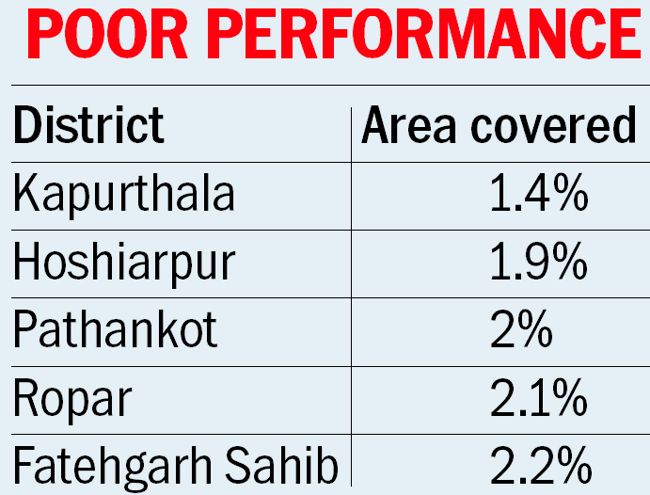Vishav Bharti
Chandigarh, July 10
With just six per cent of the targeted area brought under the direct seeding of rice (DSR), it seems Agriculture Department officials have dumped Chief Minister Bhagwant Mann’s flagship programme.
In view of the depleting groundwater table, the CM had in April announced Rs 1,500 per acre incentive for each farmer who would opt for the DSR instead of the traditional paddy transplantation.
Subsequently, the Agriculture Department had fixed a target of bringing 29.7 lakh acre (12.02 lakh hectare) under the direct sowing scheme.
Each district was given a minimum target and field officials were asked to publicise the scheme. Even Chief Agriculture Officers were forewarned that they would face strict action if there was any negligence in the implementation of the scheme.
In spite of that, the field staff, as the figures suggest, failed to popularise the scheme among farmers.
The department could bring just 2.06 lakh acre (0.83 lakh hectare) under the DSR. This is just 6.9 per cent of the target.
Some of the low-performing districts are Kapurthala, where just 1.4 per cent of the target has been achieved, followed by Hoshiarpur (1.9 per cent), Pathankot (2 per cent), Ropar (2.1 per cent) and Fatehgarh Sahib (2.2 per cent).
The districts that performed relatively better, but missed the target by a big margin include Muktsar, where 18 per cent of the targeted area could be brought under the DSR, followed by Fazilka (17 per cent), Mohali (14 per cent), Bathinda (10 per cent) and Mansa (9.4 per cent).
Agriculture and Rural Development Minister Kuldeep Dhaliwal had last week pulled up department officials for not doing enough to make the scheme popular.
When contacted, Director (Agriculture) Gurvinder Singh said the reasons behind the poor performance of the scheme was the unavailability of water in certain areas of Malwa due to a canal breach.
“Last year, weed caused destruction in certain areas where DSR was adopted. So, farmers were reluctant to opt for the DSR this time. The department will learn from its mistakes and improve next year,” he said.
The traditional methods of paddy sowing demanded excessive water, which resulted in the depletion of water table, the CM had said, adding some districts had fallen in the red zone category.
It is claimed the DSR is environment-friendly and economically viable for farmers. It is also said that the technique helps in getting increased production of wheat, where direct sowing of paddy is adopted.
- Target: 29.7 lakh acre
- 2.06 lakh acre under the DSR
- July 10 last date to opt for DSR
- Rs 1,500 per acre incentive for each farmer
Will improve next year
Last year, weed caused destruction in certain areas. So, farmers were reluctant to opt for the DSR this time. The department will improve next year. — Gurvinder Singh, Director (Agriculture)

Despite incentive, 7% of targeted area under DSR in Punjab
{$excerpt:n}

